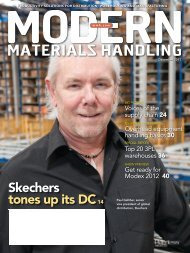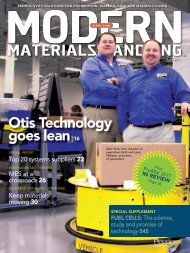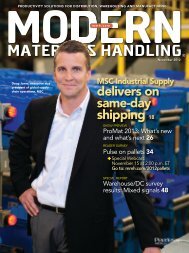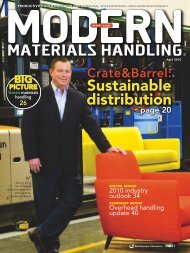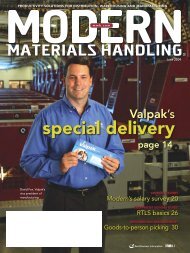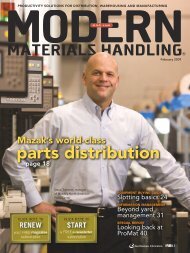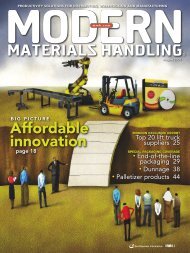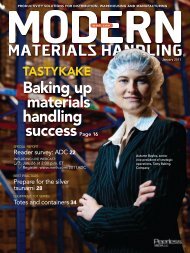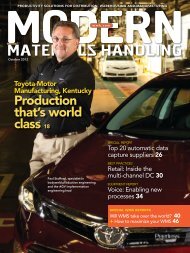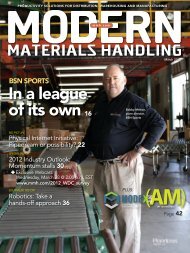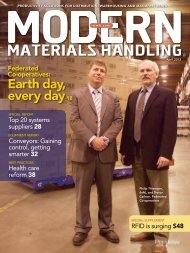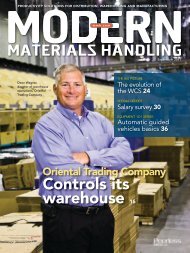Create successful ePaper yourself
Turn your PDF publications into a flip-book with our unique Google optimized e-Paper software.
modern Equipment 101: Data captureA primer for warehouse/DC managersLeft: Vehicle-mounted computers that communicate wirelessly to the networkprovide real-time data and create efficiencies since workers don’t have to geton and off lift trucks to count and handles cases. Above: Voice technologyis often applied to labor-intensive activities, like piece picking, putaway,replenishment and cycle counting.too,” says Stubbs.• Ruggedized handheld devices areavailable in a variety of form factors,depending on the job. Order pickerscarry an integrated handheld device thatincludes a scanning engine for bar codesor a reader for RFID tags. Supervisorswho are not scanning as often as anorder selector may carry mobile computersthat are similar to a PDA.Today’s mobile computers arenearly as powerful as a desktop, andthe graphics have improved over time.These machines are able to run theapplications you need on an Intel-basedplatform running an open system likeWindows.“These mobile computers are reallythe driving force behind productivityand accuracy in a facility,” says Stubbs.“These are the devices needed to besuccessful and competitive.”BAR CODE SCANNINGBar code scanning is the most commonway to collect data at every link in thesupply chain. There are two major componentsand considerations in any barcode solution:• choosing the right type of bar codeor bar code label for the right type ofapplication, and• choosing the best scanning devicefor the application.Bar codesBar codes are everywhere and oneverything. In fact, according to MartyJohnson, product marketing managerfor Zebra Technologies, if somethingdoesn’t have a bar code, it may not existin an automated system. That may bea bit of an exaggeration, as RFID andother technologies gather steam. But,bar codes are certainly pervasive. And,he adds, the ramifications of not havingsome method of identification are hugeand costly.Bar codes can have different appearancesand can have different levels ofdata storage capabilities. In today’sindustrial settings, there are at leastthree types of labels.1. 1D, or linear, bar codes are themost familiar arrangement of black andwhite lines and spaces used to createthe Universal Product Code (UPC).This is the bar code that people think offirst, says Johnson. It’s the linear stylestyle —a classic UPC with stripes ofvarying degrees of width.2. 2D bar codes come in a variety offorms, but consistent across the boardis that all information is encoded verticallyand horizontally. “A 2D bar codehas a different look to it,” explainsJohnson. “It’s basically two dimensionaland looks like a series of blocks and trimmh.com<strong>Modern</strong> <strong>Materials</strong> <strong>Handling</strong> / O c t o b e r 2 0 1 1 35



